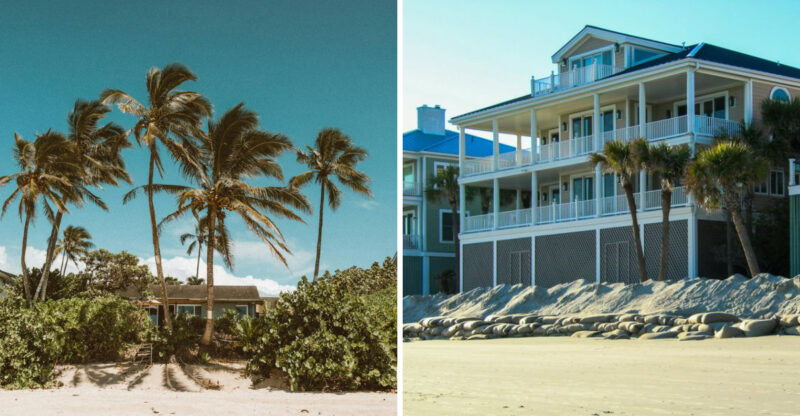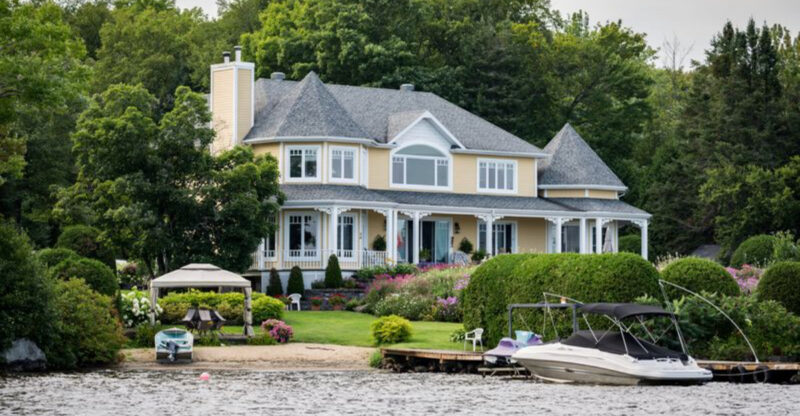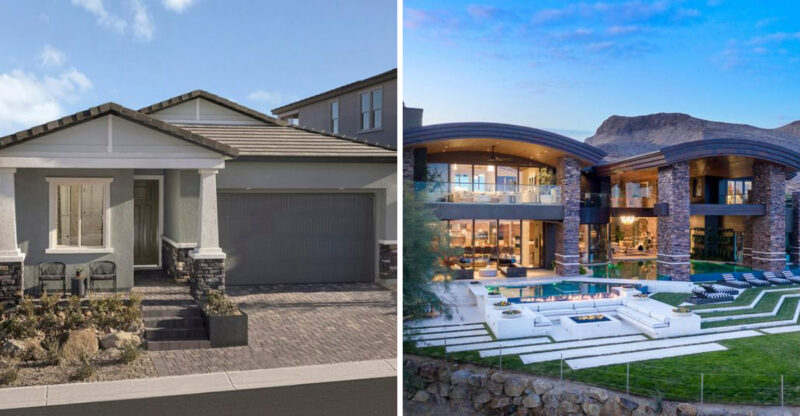12 New York Homes Expected To Cool Off And 4 To Rise By The End Of 2025 – Market Experts Warn

The housing market is shifting once again, and the signs are impossible to ignore. Demand that once felt unstoppable is beginning to cool, leaving some property owners reconsidering their next move.
In New York, experts are watching the trend closely as luxury high-rises, quiet suburbs, and once-booming neighborhoods start to feel the change. The next few months could redefine what it means to buy and sell in a market known for its energy and ambition.
1. High-End Condos In Midtown Manhattan
Corporate relocations fueled demand for years. Now, with hybrid work models stabilizing, fewer executives need immediate Manhattan addresses, softening the condo market.
Oversupply plays a role too. Developers flooded Midtown with new units, creating competition that benefits buyers but strains sellers trying to stand out.
Amenities alone may not seal deals anymore. Value-conscious purchasers weigh location convenience against suburban space and lower costs.
2. Waterfront Properties In The Hamptons
Summer escapes became year-round havens during the early 2020s in New York. As life normalizes, demand for second homes is easing, leaving some Hamptons properties sitting unsold for months.
High property taxes and maintenance add financial pressure. Buyers are rethinking whether seasonal use justifies the investment, especially with travel reopening globally.
Climate concerns also factor in. Coastal erosion and insurance costs make waterfront ownership riskier than before.
3. Historic Townhouses In Harlem
Cultural richness and architectural beauty define Harlem townhouses in New York. Still, gentrification debates and shifting neighborhood dynamics create hesitation among potential buyers seeking long-term stability.
Renovation demands can overwhelm budgets. Preserving historic details while modernizing systems requires expertise and cash reserves many buyers lack.
Market momentum has slowed noticeably. Properties linger longer, signaling that premium pricing may need recalibration to attract serious offers.
4. Upstate Lakefront Vacation Homes
Peaceful retreats offered solace, but interest is waning as travel resumes. Buyers who once craved isolation now question whether vacation homes fit their lifestyles.
Seasonal limitations matter more now. Short summers and harsh winters reduce usability, making year-round primary homes or rentals more attractive investments.
Maintenance from afar poses challenges. Absentee ownership means higher costs for caretaking, snow removal, and emergency repairs that eat into budgets.
5. Luxury Lofts In SoHo And Tribeca
Industrial chic once commanded premium prices. Today, younger buyers prioritize turnkey convenience over raw spaces needing personal touches and ongoing investment.
Neighborhood vibrancy has shifted post-2020. Retail vacancies and reduced foot traffic make SoHo and Tribeca New York neighborhoods feel less dynamic than their heyday.
Competition from newer developments hurts too. Modern buildings offer similar aesthetics with better amenities, pulling attention away from older loft conversions.
6. Co-Ops On The Upper East Side
Strict board approvals and hefty down payments limit buyer pools. Younger generations prefer condos with fewer restrictions and easier financing options.
Aging infrastructure creates concerns. Many co-ops need major upgrades, leading to special assessments that deter budget-conscious purchasers.
Cultural shifts play a role. The formality and exclusivity once prized now feel outdated to buyers valuing diversity and flexibility in housing choices.
7. Modern Apartments In Hudson Yards
Shiny and new, Hudson Yards, New York promised cutting-edge living. Yet high prices and corporate sterility leave some buyers cold compared to neighborhoods with established character.
Retail struggles undermine the vision. Empty storefronts and limited dining options make the area feel incomplete, reducing its appeal as a vibrant community.
Resale challenges emerge early. Units bought at peak prices struggle to appreciate, leaving owners underwater or waiting years to break even.
8. Brooklyn Brownstones In Gentrified Areas
Charm and character defined these historic homes for decades. Yet rising interest rates make their million-dollar price tags harder to justify for families on tight budgets.
Renovation costs add another layer of complexity. Many brownstones need significant updates, turning dream homes into money pits for unprepared buyers.
Market fatigue is setting in. Neighborhoods once considered hot are cooling as affordability concerns push buyers toward outer boroughs or suburbs.
9. Investment Properties In Queens
Rental demand shaped Queens into an investor haven. Rising interest rates and tenant protections now squeeze profit margins, making deals harder to pencil out.
Maintenance and regulatory costs climb steadily. Landlords face stricter rules and higher expenses, reducing net returns and cooling enthusiasm for new acquisitions.
Buyer competition has softened noticeably. Investors seek better yields elsewhere, leaving Queens properties sitting longer or selling below asking prices.
10. Short-Term Rental Units In Manhattan
Platforms like Airbnb made short-term rentals lucrative for the New York state. Regulatory crackdowns and enforcement now limit operations, scaring off investors who counted on tourism income.
Oversupply compounds the issue. Too many units chasing fewer guests drives down nightly rates, eroding profitability and making ownership less attractive.
Long-term rentals may offer stability. Yet converting units back means lower yields, leaving owners stuck between shrinking profits and uncertain regulatory futures.
11. Suburban Homes In Nassau County
Proximity to city jobs once justified Nassau County premiums. Hybrid work reduces that advantage, prompting buyers to consider cheaper regions with similar suburban perks.
Property taxes remain a major deterrent. High levies strain budgets, especially for younger families balancing childcare, student loans, and rising living costs.
Market activity has slowed considerably. Homes take longer to sell, and price reductions become necessary to attract interest from cautious buyers.
12. Ski Chalets In The Catskills
Winter sports and weekend getaways drove Catskills popularity. Unpredictable snowfall and climate shifts now raise doubts about long-term viability as ski destinations.
Seasonal use limits appeal. Buyers in New York question whether a few months of enjoyment justify year-round expenses, especially with travel options expanding globally.
Maintenance costs add up quickly. Remote locations mean higher bills for upkeep, heating, and emergency services, discouraging all but the most committed buyers.
13. Student Housing Investments In Albany And Ithaca
College towns are once again proving to be reliable sources of steady rental income. Rising enrollment and renewed demand for in-person learning are driving occupancy rates higher, encouraging investors counting on consistent cash flow.
Competition for housing near universities is intensifying. Limited campus dorm capacity pushes more students toward private rentals, allowing landlords to raise rents and reduce concessions.
Exit strategies look increasingly promising. Growing investor interest in student housing expands the buyer pool, making it easier to sell and capitalize on rising property values in thriving college markets.
14. Luxury Manhattan Penthouses
Luxury demand is surging again. Once a quiet corner of the market, New York’s premium residences are attracting renewed interest from buyers seeking permanence and prestige.
Exclusive amenities and limited availability are driving competition. For many, high maintenance costs feel justified by superior design, privacy, and location.
Sellers hold firmer ground as listings move faster and price growth returns to the top tier of the market.
15. Single-Family Homes In Westchester County
Suburban living is surging as buyers seek more space, quality schools, and calm without losing city access. Flexible office policies make Westchester attractive again, giving its housing market renewed strength.
Homes are selling faster as families return for larger lots and community life. Competition is tightening supply, pushing prices higher and boosting seller confidence.
School quality still drives decisions, now alongside lifestyle appeal. Families value good districts, privacy, and space – advantages that keep suburban living in high demand.
16. New Construction Homes In Long Island Suburbs
Homebuilders can’t keep up with renewed demand, and inventory is tightening fast. Distinctive designs and upgraded finishes are giving new developments a stronger edge with buyers.
Commute patterns are stabilizing as more professionals return to hybrid work. Proximity to Long Island business hubs adds value again, boosting interest in well-located homes.
Pricing is firming as competition rises. New builds command premiums for efficiency, style, and modern layouts – features that keep motivated buyers in the market.






